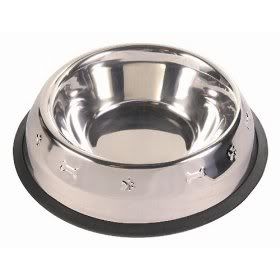 As humans we’ve learned that some of the chemical elements used to make plastic bottles and dishes are causing a variety of human health problems and now veterinarians are finding issues with using plastic pet food bowls as well. Plastic is porous, even though it may seem like a smooth surface, and therefore means that dirt and germs can build up and can’t be sterilized properly. Not to mention why would we want to expose our pets to these chemicals as they can leech into their food and water?
As humans we’ve learned that some of the chemical elements used to make plastic bottles and dishes are causing a variety of human health problems and now veterinarians are finding issues with using plastic pet food bowls as well. Plastic is porous, even though it may seem like a smooth surface, and therefore means that dirt and germs can build up and can’t be sterilized properly. Not to mention why would we want to expose our pets to these chemicals as they can leech into their food and water?

There are a few alternatives. Here are the pros and cons:
Stainless steel – These are durable and resist destruction by even the most avid chewer. Choose only food-grade metal. The drawback to these is they are lightweight and so sometimes getting the last bits of food out may be difficult as it slides away from your pet. To help with this use a non-slip mat under the bowls.
Glazed ceramic – These can be either styles that you find at your local pet store or at the kitchen store or second hand shop. Make sure the bowls are glazed and that there are no chips or cracks where bacteria can grow and make your dog or cat sick.
In all cases, keep these bowls clean. Bowls that are used for wet food should be washed everyday and dry food once or twice per week. Water bowls also should be washed twice per week and at the very least rinsed and the water replaced twice per day.







